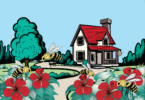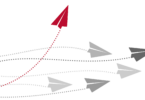Athens, Ga. – Just back from Afghanistan, where she helped diagnose that country’s first case of bird flu, University of Georgia veterinarian Corrie Brown has a new perspective on the disease that threatens to become the world’s next pandemic.
“I saw the human-animal bond in another way,” said Brown, professor and international activities coordinator in the College of Veterinary Medicine. “It’s a survival and a sustenance kind of bond – and that bond is going to be disrupted by bird flu.”
Brown, a globe-trekking pathologist with a passion for international service, was at Kabul University helping its veterinary school craft a mission statement that would help it reemerge from decades of disuse. The school, used as a military base during the Afghans’ war with the Soviet Union and closed during the rule of the Taliban, is housed in a three-story building riddled with bullet holes and stripped of its electrical wires. Brown said that despite their crumbling facilities, the veterinarians in Kabul were eager to learn the skills that will help rebuild their country’s agricultural base.
Brown taught the veterinarians to perform animal autopsies known as necropsies. Based on reports of bird flu in neighboring Pakistan and anecdotal reports about unexplained bird deaths in Afghanistan, she half-expected to encounter an infected bird.
The first animal that she necropsied was a pigeon that was brought to the diagnostic laboratory after mysteriously falling out of the sky. Thoughts of finding bird flu raced through Brown’s mind.
“We did the necropsy,” Brown said. “And it had been shot. We all laughed because that was a pretty good reason for falling out of the sky.”
The next animal she necropsied had canine distemper, an incurable viral disease that infects dogs. Next, she helped a local farmer diagnose Brucella melitensis, a bacterial disease that terminates pregnancies in lambs and goats and can infect humans, causing flu-like symptoms and, in rare cases, neurological problems and long-term joint pain and fatigue.
“We made the diagnosis and the farmer went home with vaccines for his flock,” Brown said proudly. “So I like to think we did a very important thing.”
Three days after her necropsy workshop finished, a local farmer gave her a burlap bag with a dead rooster in it. Opening it, she saw a blue coloring on the bird’s once-red comb that was a tell-tale sign of bird flu. “I said, ‘This is probably it,Ҕ she recalled.
A real but brief sense of panic came over her as she looked down at the bird. It had been killed by a virus that has decimated poultry populations in Asia, killed more than 100 people worldwide and has the potential to kill millions if it were to develop the ability to pass from humans to humans.
That panic passed as she thought, “Well, this is what I’ve been trained for.”
The necropsy revealed hemorrhaged lungs, water around the heart and other signs of organ failure characteristic of bird flu. A researcher on hand made a preliminary confirmation of the viral strain using DNA testing, and a lab in Italy that had received samples from previous birds gave the final, definitive confirmation of the feared H5N1 influenza virus.
After performing the necropsy, Brown returned to the heavily fortified U.S. embassy in Kabul, where she was greeted with a bag of fresh clothes, promptly escorted to a shower on the outskirts of the embassy for decontamination and given the antiviral drug Tamiflu.
That night, the Afghan government formally announced that bird flu had penetrated its borders, paving the way for aid dollars that will help fight the disease in that country.
After her initial excitement faded, Brown began to consider the implications of her discovery. She knew that being exposed to the virus put her at risk, but also thought of the Afghan veterinarians who would be testing for the virus without the benefit of antiviral drugs and protective gear.
She thought of what disruptions to the poultry supply would mean to Afghan boys selling their family’s eggs on the street and to a population that already does not get enough protein. She thought of the potential for widespread human infections and realized that the global problem of bird flu has very personal implications for millions of people.
“It gave me renewed enthusiasm to do something positive,” she said.
#
Note to editors: For high-resolution photos of Brown’s work in Afghanistan, call 706/542-5361.







